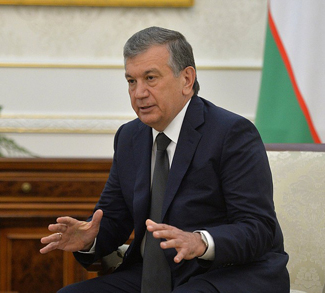On 2 July 2020, Philippine Defense Secretary Delfin Lorenza said that India intends to increase its Freedom of Navigation (FON) activities in the South China Sea (SCS). This adds to the pushback against China’s dominance of the disputed waters of the South China Sea. Lorenzana welcomes Indian presence in the SCS as the Philippines tries to carve diversified actions to prevent China from dominating the said area.
But what should the Philippines actually expect from India’s desire for increased FON in the SCS?
India’s ‘Act East’ policy was primarily inspired to balance against China. Yet, Prime Minister Modi has maintained reservations over the costs and benefits of the endeavor. But following the June 2020 border clash between India and China at the Line of Actual of Control (LAC) of the Ladakh region, India has formed a game-changing resolve against the Chinese threat. One result has been its gravitation toward the United States and its Japanese and Australian allies through the Quadrilateral Security Dialogue – or the Quad.
The United States has become increasingly assertive against Chinese revisionism in the Indo-Pacific. On 13 July 2020, US Secretary of State Mike Pompeo said in a statement that the United States would not allow China to treat the South China Sea as its “maritime empire,” thus casting Washington as the leading defender of the 2016 Arbitral Tribunal decision. On July 17, the Indian Ministry of External Affairs stated that the South China Sea is “part of the global commons” and that the Indian government stands for FON. Under the Quad format, India has entered into deeper intelligence-sharing and intensified naval exercises to challenge Chinese activities in the Indo-Pacific.
Aside from its support for FON and ongoing sea lane access, India has vested interests in the South China Sea, notably its oil exploration project with Vietnam in the Spratly Islands since 2013. China has repeatedly rejected this exploration arguing for its historic rights. Since then, India and Vietnam have maintained close contact in monitoring Chinese incursions in the area.
With India leaning toward the Quad and its stand for the South China Sea, Southeast Asia, including the Philippines, cannot expect a free lunch from India. The Philippines can expect both benefits and costs concerning its interests in the South China Sea.
On the one hand, the Indian stance in favor of FON provides a legal multiplier for Manila concerning the 2016 Arbitral Ruling. But this is difficult for the meantime as long as Duterte remains in office. The Philippines has set aside the 2016 Arbitral Ruling for a promised joint oil and natural gas exploration with China. But this prospect, as well as other investments, have yet to materialize.
On the other hand, India’s interest in joint exploration with Vietnam puts the Philippines at a disadvantage. While the 2016 Arbitral Ruling is an exclusive award given to Manila over Beijing, other states have adopted it for their own self-interests, thanks to Duterte’s ongoing appeasement of China.
Even the ASEAN Code of Conduct (COC) is unlikely to work out for the Philippines since China remains the most powerful state at the negotiating table. Meanwhile, the Philippines’ Malampaya Gas Field is yet to yield optimum results in securing national energy interests. The energy security plan became yet more endangered when Duterte’s China-friendly ally Dennis Uy seized a forty-five per cent ownership stake of said gas field.
The Armed Forces of the Philippines (AFP) remains relatively weak in terms of defending Manila’s sovereign claims in the SCS against harassment directed at vessels and Filipino fishermen, despite the arrival of its new vessels. Moreover, Duterte’s command guidance has made things worse by disseminating defeatist narratives toward China. In this regard, the AFP’s external defense mission would be rendered nearly useless – in spirit – given the prevalence of Chinese grey zone operations.
In spite of this, all is not lost for the Philippines. For such a time, the Philippine defense concept is tied with its security alliance with the US. Even though Duterte has made remarks about ending the alliance, the AFP has expressed disapproval. Duterte’s threat to end the 1997 Visiting Forces Agreement (VFA) has also been suspended in the meantime due to ‘developments’ that occurred in the region.
As for India’s increased FON activities, their effect would be negligible for now as India is already spread thin in its own backyard. But these limits can be mitigated by the Quad’s involvement – and the Philippines would have to watch for such a development. While the Quad is yet to conduct FON in the SCS, the possibility is nevertheless there.
To avoid the tragedy of Chinese revisionism and complex Indian entanglement in the South China Sea, the Philippines would have to affirm its relations with the Quad – especially its US ally – in the post-Duterte era. Manila’s National Security Policy (NSP) 2017-2022 insists that the defense of Philippine claims in the South China Sea includes developing capability and increasing its network with allies and partners. Accordingly, the Quad can provide Manila with equibalancing against Beijing while limiting any potential interference from Quad powers.
The views expressed in this article are those of the authors alone and do not necessarily reflect those of Geopoliticalmonitor.com or any institutions with which the authors are associated.




